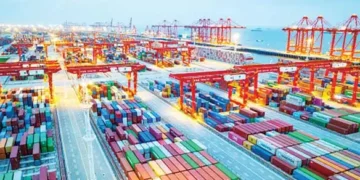Blitz Bureau
NEW DELHI: INDIA currently has over 600 million people below the age of 25 and enjoys a demographic dividend where the working-age population significantly outnumbers dependents. Yet the real test lies in transforming this potential into strategic diplomatic capital. This requires India not just to be content with the title of a ‘labour exporter’ but also to negotiate forward-looking and flexible labour mobility frameworks that recognise Indian skills and protect Indian workers’ rights abroad. Labour mobility has the potential to transform India’s demographic advantage into diplomatic leverage – if backed by skill recognition, gender-inclusive policies, and portable social security.
The current demographic advantage, however, has transformed from a domestic policy consideration into a powerful tool of economic diplomacy, fundamentally reshaping how India engages with partner nations through labour mobility frameworks. With economics and geopolitics, we have seen developed nations adopt an inward-oriented stance on migration, which has put emigrants from developing nations in a difficult position. The rise of leaders like Donald Trump and Giorgia Meloni, along with their populist politics in North America and Europe, has led to more restrictive immigration policies.
These restrictions continue to withstand public scrutiny even though the developed world comprises ageing economies that would benefit from skilled migration when viewed from a purely economic standpoint. Historical precedent suggests that gradual efforts have been made to capitalise on this potential: India has transitioned from being a passive labour exporter to pursuing active diplomatic engagement in this regard.
The foundation of this strategic shift was laid with the establishment of India’s Centre for Migration as an autonomous think-tank linked to the Ministry of External Affairs, tasked with advising on all matters related to global mobility. India and Denmark signed an MOU on labour mobility partnership, aiming to facilitate the movement of skilled workers between the two countries. While the MoU set an important precedent, it remains largely symbolic, with real mobility still limited to a narrow band of highly-skilled workers.
In recent years, India’s FTA negotiations with multiple nations have aimed to address core issues, including the lack of social security portability and related concerns such as qualification recognition. The India-UK FTA has a key provision exempting Indian workers temporarily posted in the UK from paying the UK’s social security contributions for up to three years. Along similar lines is the programme established under the Australia-India Mobility and Migration Partnership, which offers 3,000 annual places for Indian graduates and early-career professionals to work in Australia for up to two years. Australia gains access to skilled professionals, while India’s workforce acquires global exposure.
Notable migration and mobility partnership agreements with France and Germany contain features like extended residency permits for students, increased quotas for jobseeker visas, liberalised short-stay multiple entry visas, streamlined readmission procedures, and exchange programmes for young professionals, portraying the growing prominence of labour mobility in India’s international negotiations. The benefits accrued from India’s labour mobility strategy are multifaceted in nature.
Beyond simple economic benefits in the form of remittance inflows, India’s strategy serves as an anchor for technology transfers, knowledge-sharing, and global value chain integration. As global labour markets restructure in response to technological and demographic disruptions, India’s ability to position its workforce as a solution to these challenges will determine its strategic relevance in an increasingly competitive global mobility landscape.































